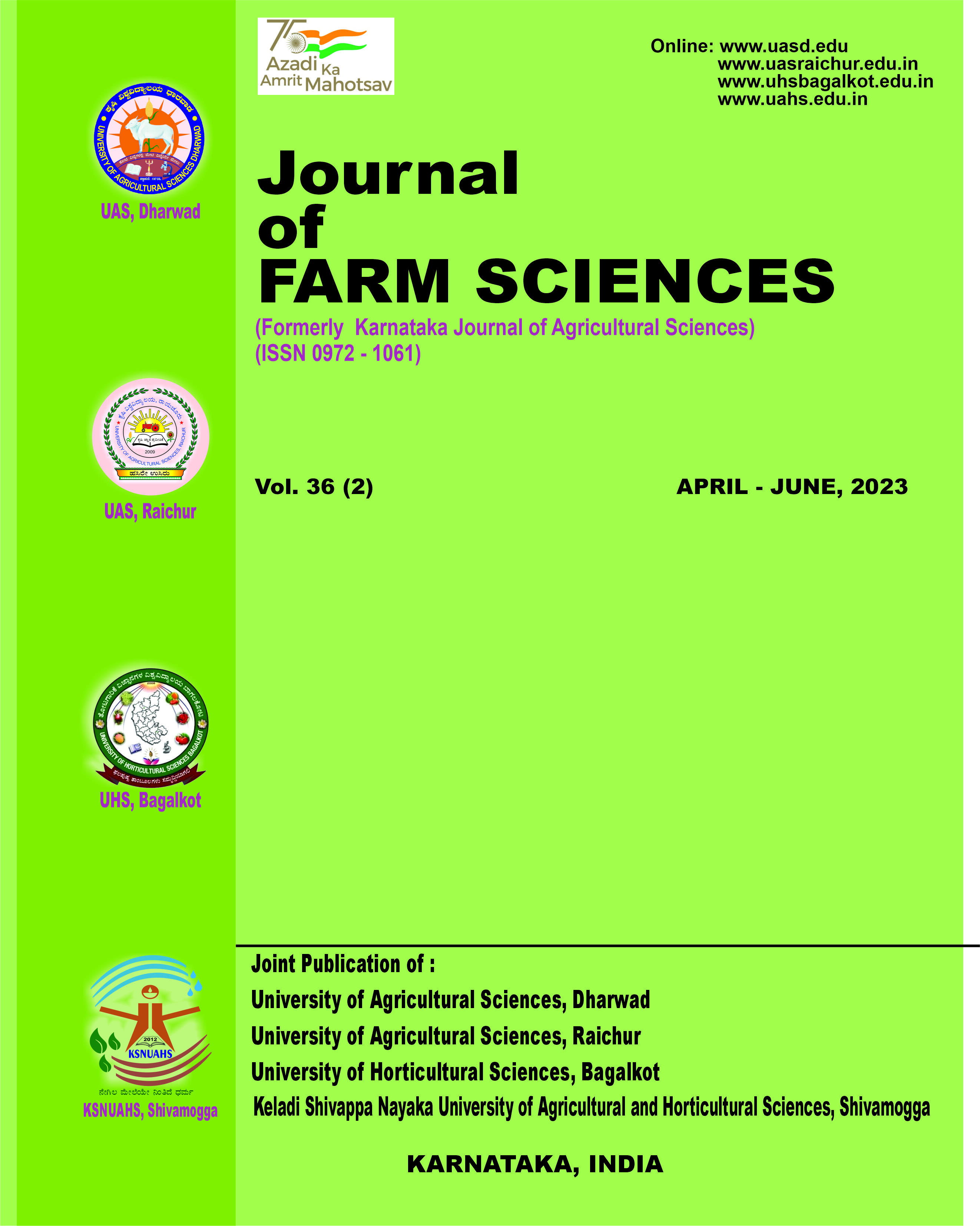Growth dynamics of area, production and productivity of soybean in Belagavi district of Karnataka
Abstract
Soybean (Glycine max) holds immense global economic significance. Its cultivation spans 121.20, 3.17, 0.86 lakh hectares, yielding 128.97, 3.76, 0.87 lakh tonnes, and achieving productivities of 1064, 1212, 1033 kilograms/hectare in India, Karnataka and Belagavi district respectively. Lever aging growth analysis for innovative marketing strategies, the Compound Annual Growth Rate (CAGR) emerges as a pivotal tool. Meanwhile, regression models find application in control strategies. Collating secondary data from sources such as DSO, Belagavi and DGCIS over a decade, a comprehensive view was obtained. In Karnataka, area of soybean burgeoned from 1.90 lakh hectares in 2011-12 to 3.17 lakh hectares in 2020-21, boasting a robust CAGR of 6.71 per cent. Similarly, production escalated from 1.92 lakh tonnes to 3.76 lakh tonnes during the same period, at a CAGR of 8.87 per cent. Correspondingly, productivity of soybean improved from 1.01 tonnes/hectare to 1.21 tonnes/hectare, with a CAGR of 2.11 per cent. Within Belagavi district, the soybean landscape witnessed growth from 0.77 lakh hectares in 2011-12 to 0.86 lakh hectares in 2020-21, demonstrating a CAGR of 2.32 per cent. Production figures mirrored this trend, ascending from 0.78 lakh tonnes to 0.87 lakh tonnes, reflecting a CAGR of 7.09 per cent. Notably, productivity of soybean progressed moderately, advancing from 1.01 tonnes/hectare to 1.03 tonnes/ hectare at a CAGR of 4.77 per cent. Karnataka experienced a substantial and significant surge in soybean cultivation, attributed to escalating demand and advancements in scientific techniques. Meanwhile, Belagavi district exhibited a positive growth trajectory, partially attributable to similar factors. Although soybean productivity witnessed an uptick, the pace was relatively modest in both Karnataka and Belagavi district. Suitable measures have to be taken up by the government and by the farmers like introducing and using seeds of HYVs to boost the productivity of soybean.


